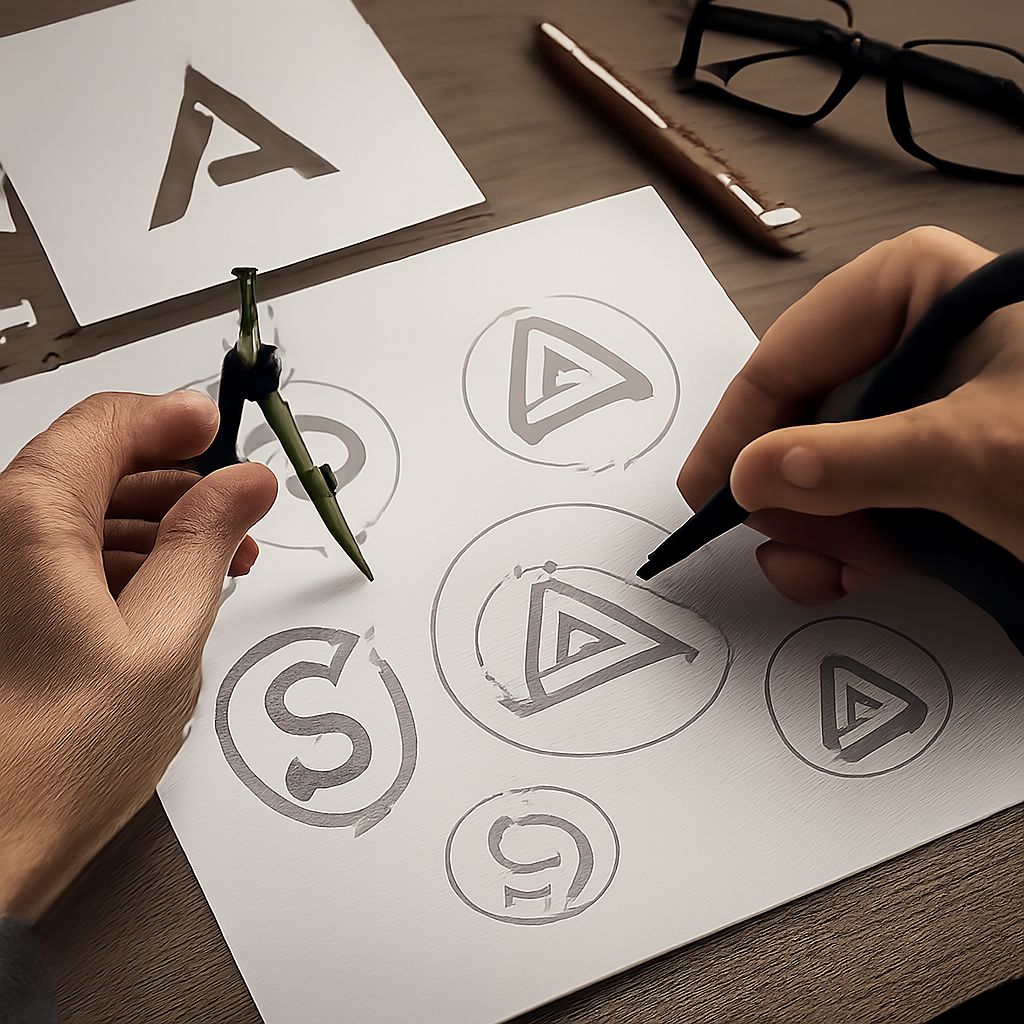Understanding the Essence of Logo Craftsmanship
Logos are the visual cornerstones of a brand’s identity. To master the art of logo craftsmanship, one must grasp the intricate balance between aesthetics, functionality, and brand storytelling. It is a delicate but rewarding process that bridges the gap between the abstract and the tangible, transforming an idea into a visually compelling entity that embodies the brand’s core message.
A well-crafted logo does much more than captivate attention—it resonates with the audience, conveys the brand’s ethos, and fosters a lasting connection. To achieve this, a logo designer must delve deep into the brand’s mission, market positioning, and target audience. This entails an in-depth understanding of what the brand represents and how it wishes to be perceived in its respective market.
- Create a timeless and versatile design, ensuring the logo adapts to various sizes and platforms without losing its essence. This adaptability is key in today’s digital era, where logos are displayed across a multitude of channels and devices.
- Use a color palette that not only complements the brand’s messaging but also evokes the intended emotional response. Colors can influence moods and decisions, making them a vital component in reflecting the brand’s voice and identity.
- Incorporate typography that enhances readability and aligns with the brand’s voice. The style and arrangement of letters convey subtle cues about the brand’s character and should be selected thoughtfully.
Key Elements of Effective Logo Design
An effective logo is distinctive, memorable, and simple. These attributes enable it to stand the test of time and remain relevant even as the brand evolves. In a hectic and visually cluttered world, simplicity stands out, allowing a logo to etch itself into the minds of viewers. When a logo is simple, it often translates across cultures, contexts, and languages without losing meaning or impact.
Clarity is crucial—avoiding complex designs ensures the logo is quickly recognizable and easily remembered. Employing geometric shapes often aids in achieving simplicity and strength, offering a symmetrical and strategic foundation that makes the logo appealing and professional.
- Symbolism is powerful; integrate design elements that reflect the brand’s core values and story. This can create a deeper connection with the audience, making the brand message more accessible and engaging.
- Maintain balance among the graphic components to ensure harmony and unity within the design. An unbalanced logo can appear chaotic, which could misrepresent the brand’s stability and reliability.
- Test the logo in black and white to verify its effectiveness across various formats and mediums. A logo that works well without color is versatile and ensures legibility regardless of printing constraints.
Advanced Techniques for Enhancing Logo Craftsmanship
Mastering logo crafting involves continuous learning and staying abreast of evolving design trends and tools. From leveraging advanced graphic software to experimenting with emerging design styles, designers must remain dynamic and adaptable. The design world is ever-evolving, and keeping up with the latest developments can open up new avenues for creativity and innovation.
Experimentation and iteration play critical roles. A robust sketching phase allows the exploration of diverse ideas, providing a fertile ground for innovation. Digital tools such as Adobe Illustrator or CorelDRAW empower designers to refine and actualize these initial concepts, facilitating the transformation of raw ideas into polished designs.
- Employ grid systems to ensure symmetry and proportion within the logo design. Grids serve as a structural guide, ensuring that every element is aligned and proportionate, enhancing visual harmony.
- Utilize negative space creatively; it can add depth and intrigue to the composition. Negative space, when used effectively, can convey secondary meanings or unique stylistic features that enrich the logo’s narrative.
- Seek feedback from peers and clients to gain fresh perspectives and enhance the design’s effectiveness. Feedback is invaluable, as it provides insights into how the logo is perceived by others, allowing for refinement and improvement.
The Process Behind Crafting a Logo
The process of crafting a logo can be as creative as it is strategic. It begins with thorough research and understanding of the client’s brand identity and values. This phase is crucial to gather insights that will inform the design direction and priorities.
Once the research is complete, brainstorming sessions follow. Here, designers explore a range of ideas, sketch potential designs, and narrow down their concepts. Sketching is a candid process where ideas flow freely, and unexpected solutions may emerge. It enables designers to visualize ideas quickly and refine them before committing to digital formats.
After sketches are critically evaluated, the most promising designs are digitally developed and refined. At this stage, designers pay closer attention to detail and consider aspects such as typography, spacing, and color schemes, ensuring each element aligns harmoniously with the overall design.
Prototyping the logo in various formats and situations is then essential. This involves testing the design across digital and physical platforms to ensure it performs well regardless of the application—be it business cards, merchandise, or digital media.
Prompt feedback from stakeholders and willingness to iterate based on this input is what elevates an initial design into an optimal logo that serves the brand’s needs effectively.
The Psychological Impact of Logo Design
Logos wield significant psychological influence—they act as the face of a brand, leaving a lasting impression. Subtle elements within a logo can stir emotions and foster brand loyalty. The choices made in color, shape, and typography echo historical and cultural connotations that resonate with audiences, influencing perceptions subliminally.
Colors in logos, for example, are carefully chosen for their psychological implications. Blue, often seen in technology companies, conveys trust and dependability. Red’s energy and urgency make it a popular choice for brands looking to evoke passion or excitement. Typography styles range from traditional serif fonts, which suggest reliability and history, to sleek sans-serif, communicating innovation and modernity.
The strategic use of these elements can engender powerful emotional responses, contributing to and reinforcing the brand image over time.
FAQ
Why is simplicity important in logo design?
Simplicity ensures that a logo is easily recognizable and memorable. A simple design is more versatile and adaptable across various formats and mediums, crucial characteristics in maintaining brand integrity in diverse applications.
How do color choices affect logo perception?
Colors trigger psychological responses and convey emotional connections. The right palette enhances brand recognition and evokes desired viewer sentiments. Colors also convey different meanings in different cultures, a factor that brands with international reach should consider.
What role does typography play in logo design?
Typography communicates the brand’s voice and enhances readability. Choosing the right typeface and style contributes to the overall integrity and personality of the logo, shaping how audiences perceive and connect with the brand’s identity.
How can I ensure my logo is versatile?
Test the logo in different sizes and formats, and ensure it performs well in both color and grayscale versions. A versatile logo maintains its impact and clarity across diverse applications, ensuring consistency in brand messaging.
What are the common mistakes to avoid in logo design?
Common mistakes include overcomplicating the design, ignoring scalability, and neglecting the research phase. Avoid using too many colors or fonts, which can clutter the design and obscure the brand message. Always ensure the logo is legible at various sizes and maintains its integrity across different media platforms.
How important is feedback in the logo design process?
Feedback is critical in the logo design process. It offers fresh perspectives, revealing potential improvements or issues that the designer might overlook. Constructive feedback helps refine the design, ensuring it aligns with the brand’s values and effectively resonates with its target audience.




